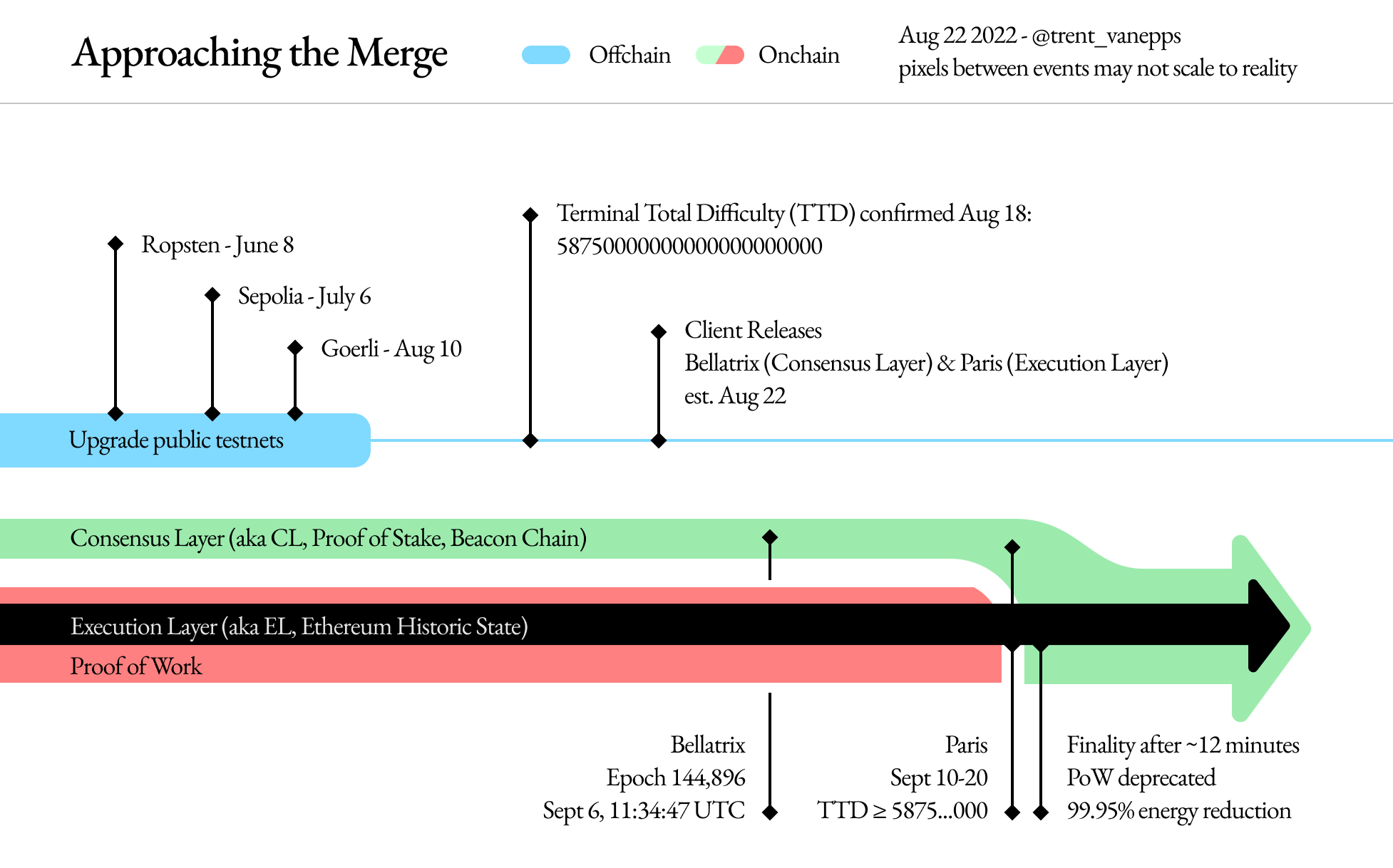Popular cryptocurrency blockchain Ethereum has completed its long-awaited switch to proof-of-stake. That upgrade process, better known as ‘The Merge’, has been years in the making. According to the Ethereum Foundation, today’s transition reduces Ethereum’s energy consumption by 99.95%.
Previously, the Ethereum blockchain relied on proof-of-work, a consensus mechanism that requires a lot of computational effort from all the decentralized nodes participating in the blockchain.
The proof-of-stake mechanism radically changes how the Ethereum blockchain works. It eliminates the need for mining new blocks as the network is now secured using staked ETH and validators.
Ethereum originally launched a separate proof-of-stake Beacon Chain on December 1, 2020. It was running in parallel with the main Ethereum blockchain.
On September 6, 2022, the Ethereum community released the Bellatrix upgrade in order to start ‘The Merge’ process. With this first upgrade, the community decided to swap the proof-of-work chain with this proof-of-stake chain upon hitting a certain Total Terminal Difficulty (TTD) value on the original Ethereum blockchain.
And that specific event happened earlier today at 06:42 AM UTC, triggering the second part of the transition called the Paris upgrade.
“And we finalized! Happy merge all. This is a big moment for the Ethereum ecosystem. Everyone who helped make the merge happen should feel very proud today,” Ethereum co-founder Vitalik Buterin said on Twitter.
Here’s what the process looks like thanks to this chart from the Ethereum Foundation blog:

Image Credits: Ethereum Foundation
What does it mean for Ethereum users? Things aren’t going to change drastically as it’s an infrastructure upgrade. Addresses, wallets and transactions still work like before.
But the fact that the Ethereum blockchain consumes a lot less electricity is incredible news already. Many developers will now focus on rollup contracts to reduce transaction costs and enable scalability.
Ethereum switches to proof-of-stake consensus after completing The Merge by Romain Dillet originally published on TechCrunch
DUOS





